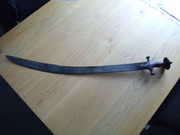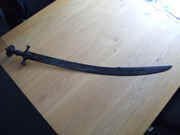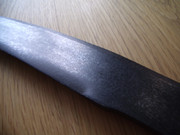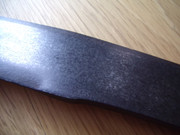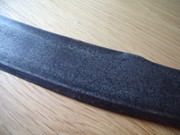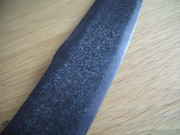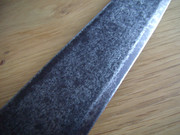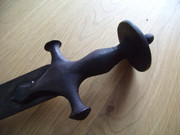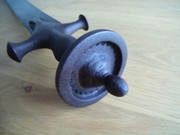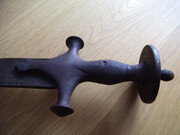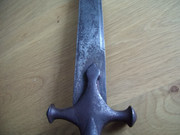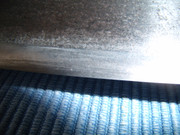Beyond describing damascus vs wootz is that there were and are/were crucible steels that do not show the dynamic patterning shown in Matt's visual transformation video. This, even with steels made in other areas of the middle east. Even if the etch shows no fancy pattern, what one wants to be looking for is the dendrites.
We don't list David Boye's dendritic cast steel as wootz
https://www.bladeforums.com/threads/david-boye-cast-dendritic-cobalt-knife-i-finished.1591809/
We don't describe modern crucible steel (check out modern crucible steels) as wootz.
We don't describe "the finest cast steel" being produced in England and elsewhere from the late 18th century on as wootz.
So, start by looking for dendrites and coarse looking blades are often pounded out from crucible cakes. Some lack the specific ingredients and process that set wootz apart from other less specific processes. I have a number of swords, one a British blade that is cast/crucible steel from around 1800 and shows the dendritic "sparkles" that had been a refined and polished sword. I have an 1800ish yataghan that is similarly a blade that shows the "trees" after polishing out some modern grinding scratching. I now have a hunting sword from about that same 1800ish period that also shows dendritic structure but I highly expect if I were to polish and etch it that the true wootz pattern simply would not show. Some regard the later mid east process as bulat/fulad, less refined European crucible undefined but in that same bucket. We have a fellow named Pettibone in the early 19th century that had a patent for joining mild steel/iron tangs to cast (crucible) steel blades.
At any rate, there is no reason to not go ahead with a polish and etch at this point but don't be disappointed and don't forget at all crucible steel blades from the past are not best described as wootz.
My truly minty Woolley&Deakin cast/crucible blade from England mounted by a New York cutler early 19th century. The mottled look is actually a sparkly finish of the original polish. Read on early British cast steel. This was refined blister/shear steel cooked in long crucibles to refine and homogenize the steel.
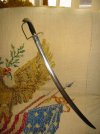
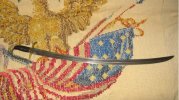
My yataghan
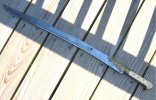
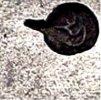
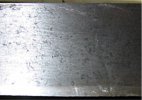
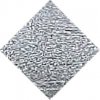
My recently acquired hunting cuttoe. Blade steel origin unknown and I'll likely do little more than some more cleaning and not try to replicate the finish of that Woolley blade's smoothness.
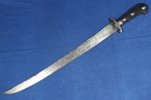
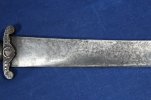
And finally an 1812ish Pettinbone cast/crucible steel blade. American made. I could only wish to own this one but I did archive the
images.

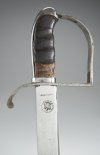
So, look beyond ratty looking blades when looking at old blades but don't jump on the wootz wagon with full expectations or description. There is still enough confusion and disagreement over describing damascus knife blades. The great NOVA presentation The Secrets of the Viking Sword, for instance, shows crucible steel being made but is not described as wootz.
Best
GC
Reading now, looks good
https://journals.openedition.org/ceroart/2557
Another handy that shows a pile of British crucibles. These were "large" production hearths holding several crucibles, somewhat like a wood cook stove.
https://www.wikiwand.com/en/Crucible_steel
